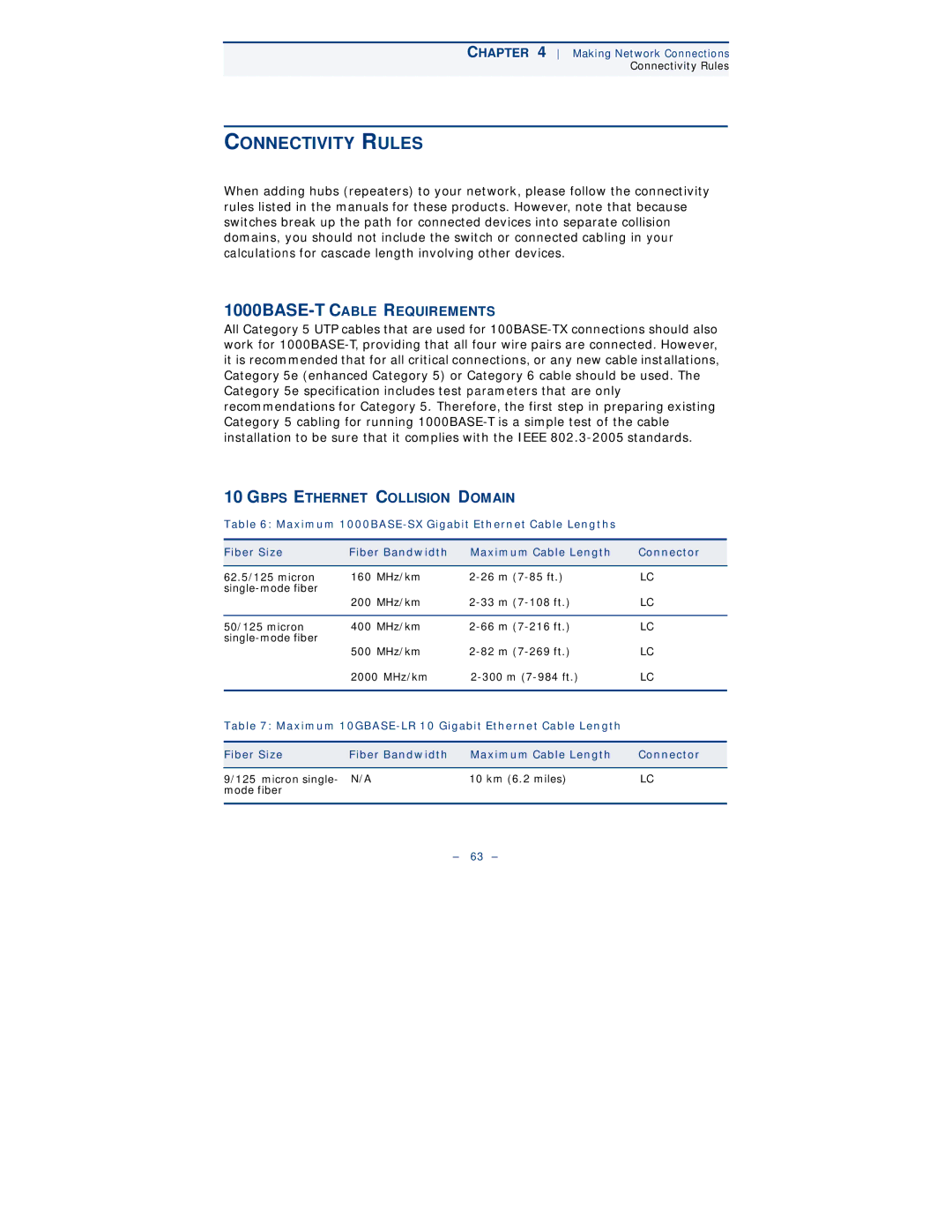
CHAPTER 4 Making Network Connections
Connectivity Rules
CONNECTIVITY RULES
When adding hubs (repeaters) to your network, please follow the connectivity rules listed in the manuals for these products. However, note that because switches break up the path for connected devices into separate collision domains, you should not include the switch or connected cabling in your calculations for cascade length involving other devices.
1000BASE-T CABLE REQUIREMENTS
All Category 5 UTP cables that are used for
10 GBPS ETHERNET COLLISION DOMAIN
Table 6: Maximum
Fiber Size | Fiber Bandwidth | Maximum Cable Length | Connector | |
|
|
|
|
|
62.5/125 micron | 160 | MHz/km | LC | |
|
|
|
| |
| 200 | MHz/km | LC | |
|
|
|
|
|
50/125 micron | 400 | MHz/km | LC | |
|
|
|
| |
| 500 | MHz/km | LC | |
| 2000 MHz/km | LC | ||
|
| |||
Table 7: Maximum |
| |||
|
|
|
| |
Fiber Size | Fiber Bandwidth | Maximum Cable Length | Connector | |
|
|
|
|
|
9/125 micron single- | N/A |
| 10 km (6.2 miles) | LC |
mode fiber |
|
|
|
|
|
|
|
|
|
|
| – | 63 – |
|
